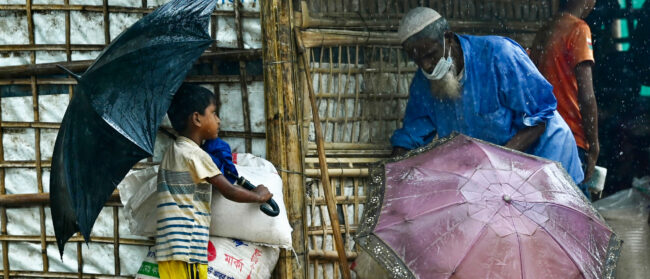In the borderland between Thailand and Myanmar, a medical centre has stood for 30 years as a testament to the very different kinds of turmoil that have rocked both nations for years – and the struggles of those who have fought to help those escaping the turmoil.
Mae Tao Clinic founder Dr Cynthia Maung first crossed the border from Myanmar decades ago, and is now responsible for a community health centre that treats more than 400 patients every day.
“I’m from Burma, and during the time that I was finishing my studies there, we had the 1988 student-led pro-democracy movement, which was cracked down on by the military,” she told Southeast Asia Globe, using Myanmar’s former name. “And thousands of students and civilians fled to the border, and many of them also began crossing the border into Thailand.”
Although the centre, in the small town of Mae Sot, began as a way to coordinate international relief efforts to the displaced communities, the drastic lack of access to basic healthcare among the migrants – many of whom hailed from indigenous minorities unable to speak either Thai or Burmese – soon convinced the clinic’s founders that change could only come from working within the local community.
“The majority of the displaced people who don’t have that access [to basic services] are women and children,” Maung said. “So we started building the maternal healthcare centre, vaccination clinic, family planning clinic, then strengthening the referral system. We started recruiting the local community or villagers to become community midwives or public health workers or managing the basic medical services. Every year we train 200 to 300 health workers together with our partner organisations as well as international NGOs and the ethnic health department.”

Working with international NGOs, local ethnic health organisations and the Thai government, the Mae Tao Clinic continues to provide essential healthcare services to remote communities on both sides of the border, with half of its patients travelling from Myanmar in search of medical care. And although the transition from military rule to a partly civilian government led by Aung San Suu Kyi has gone some way towards easing the Tatmadaw’s grip on the nation’s eastern borders, Maung said the economic situation remained dire for many of those scattered along the edge of her homeland.
“When I started running to the border, we never expected that we would be building the health system or infrastructure,” she said. “We felt that maybe we could go back to our home in three years, five years. But gradually we saw that the political situation was deteriorating, we saw more human rights violations, including land confiscations, so many people from the rural areas continued moving from their home to the cities or crossing the border to Thailand. And we realised that to solve the problem in Burma would take decades [because of] the land ownership problems and also the poverty and environmental deterioration. It’s a cycle.”


